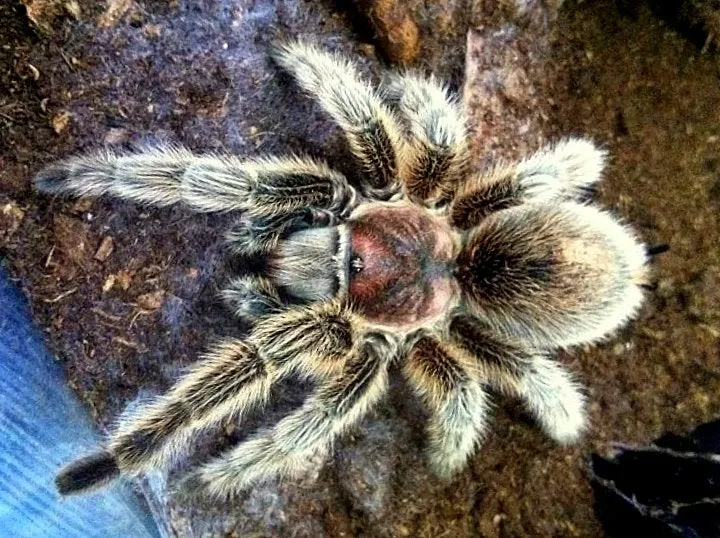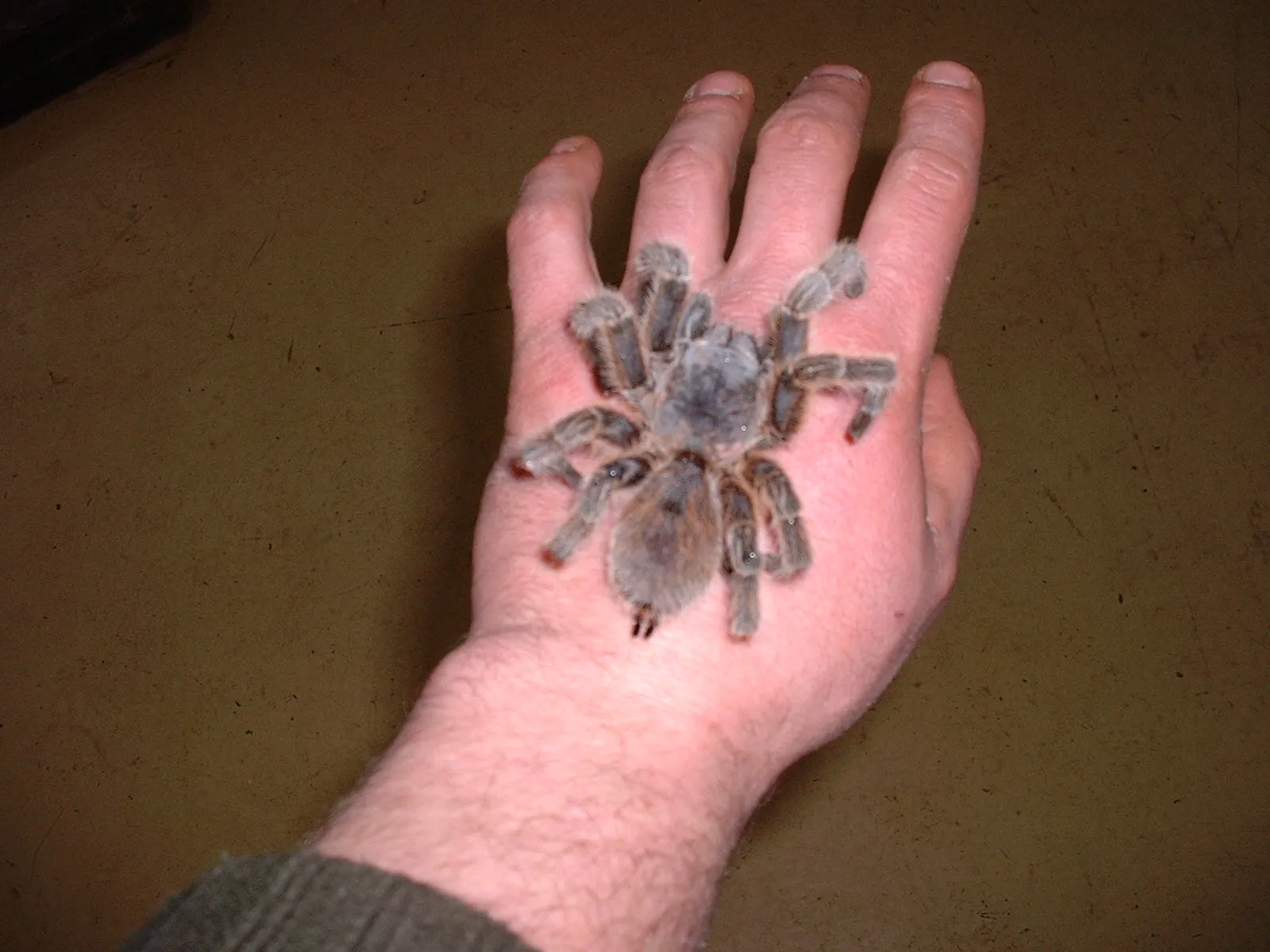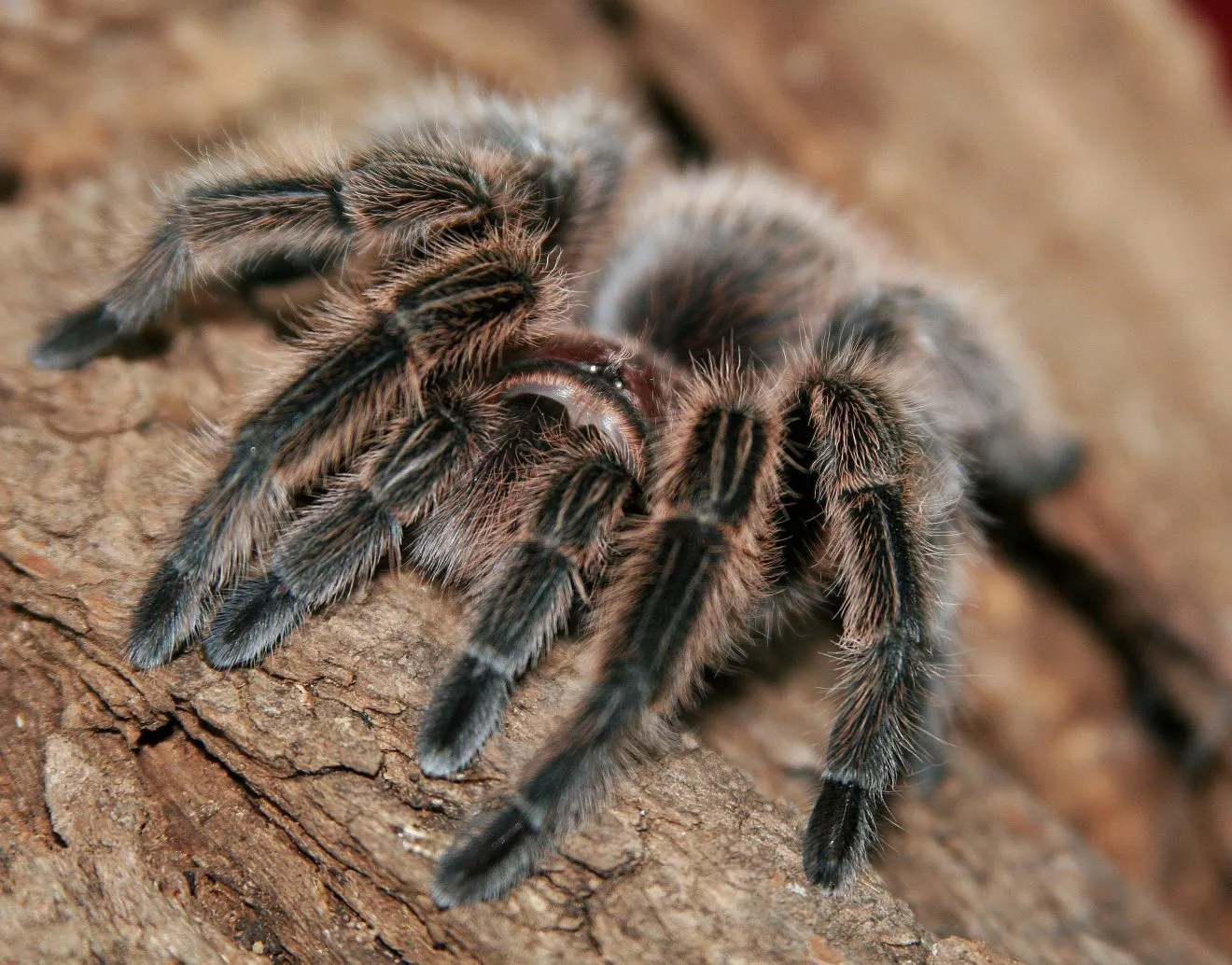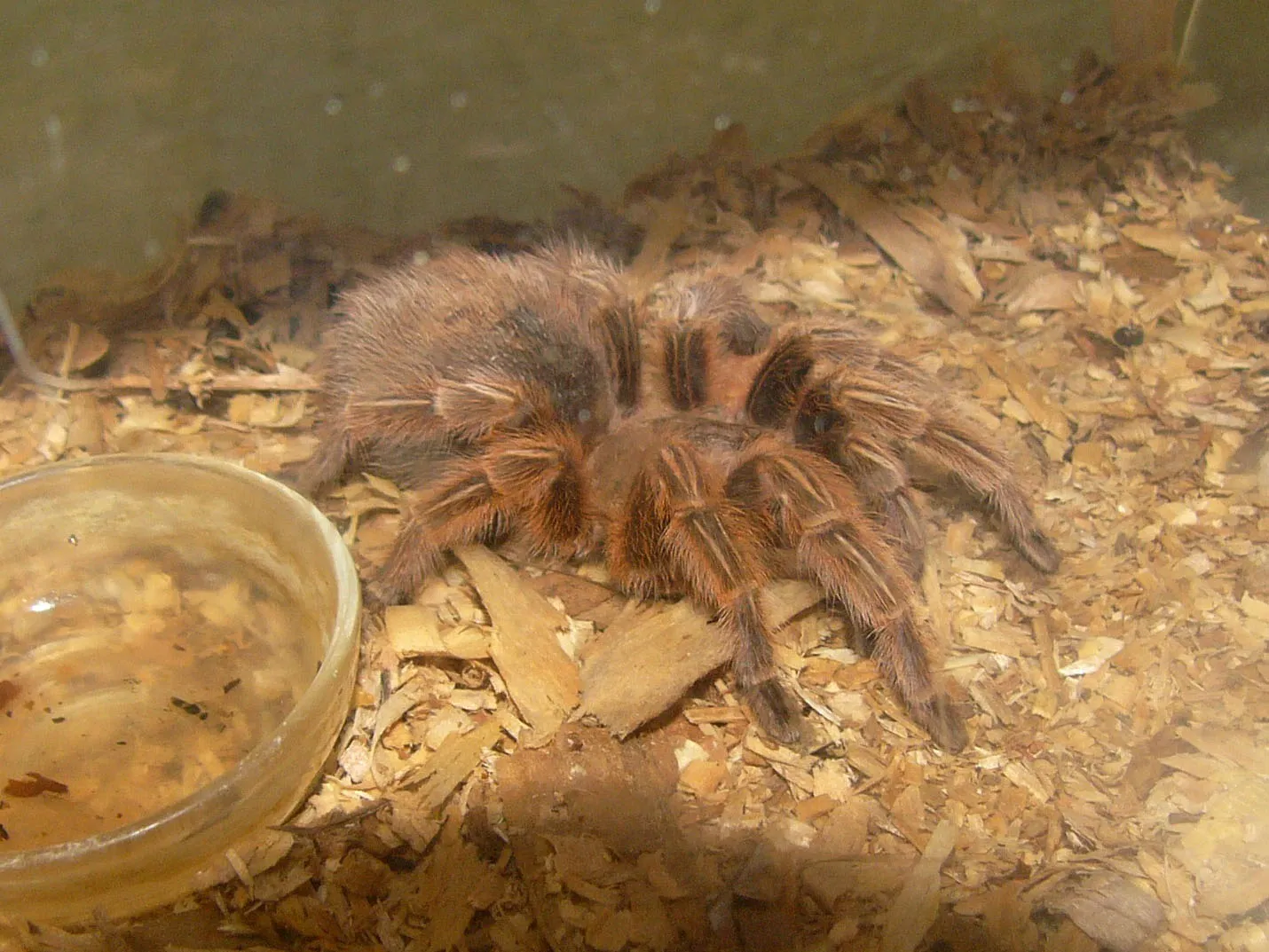Choosing Your Chilean Rose Tarantula
Bringing a Chilean Rose Tarantula into your home can be an incredibly rewarding experience. These docile and beautiful creatures make excellent pets for both beginners and experienced arachnid enthusiasts. However, the initial selection process is crucial for ensuring a healthy and well-adjusted tarantula. It’s important to consider several factors before committing to a purchase to ensure that you’re getting a tarantula that is in good condition and is the right fit for you. This guide provides you with the top tips for selecting your new pet.
Healthy Appearance
A healthy Chilean Rose Tarantula will have a plump abdomen, indicating it is well-fed and hydrated. The legs should be intact and move freely, without any signs of injury or weakness. The tarantula’s fangs should be present and appear clean. Check for any signs of mites or other parasites, which can be detrimental to the tarantula’s health. The carapace, the hard shell covering the cephalothorax, should be smooth and free from any deformities. Inspect the tarantula closely to ensure there are no missing limbs or other physical imperfections, which could indicate previous injuries or illnesses. Observe the overall posture and appearance of the tarantula to ensure it looks alert and responsive.
Active Behavior

Healthy Chilean Rose Tarantulas are typically active, exploring their enclosure and responding to stimuli. They should exhibit normal behaviors, such as walking around and occasionally displaying defensive postures if they feel threatened. Avoid tarantulas that appear lethargic or spend an excessive amount of time hiding. This could be a sign of illness, stress, or poor environmental conditions. Observe the tarantula’s movements; they should be steady and coordinated. A tarantula that stumbles or has difficulty moving might be unwell. It’s also important to see how the tarantula reacts to its environment. A healthy tarantula will show curiosity and explore its surroundings. If a tarantula is consistently inactive and unresponsive, it might indicate a problem.
Where to Buy
When purchasing a Chilean Rose Tarantula in the UK, it’s important to choose a reputable seller. Look for breeders or pet stores that specialize in exotic pets and have a good reputation. Check online reviews and ask for recommendations from other tarantula owners. Avoid purchasing from sellers who are not knowledgeable about tarantula care or who cannot provide information about the tarantula’s origin and health history. When buying online, ensure the seller offers a guarantee on the tarantula’s health and that they use proper packaging for safe shipping. If buying from a pet store, observe the conditions in which the tarantulas are kept, ensuring that they are housed appropriately and well-cared for. This will increase the chances that the animal is healthy when purchased.
Setting Up Your Tarantula’s Habitat
Creating the right environment is key to the well-being of your Chilean Rose Tarantula. The enclosure setup plays a critical role in your pet’s health and happiness. By replicating the conditions of their natural habitat, you can significantly enhance the tarantula’s quality of life. A well-designed habitat provides not only a secure and comfortable home but also facilitates their natural behaviors, such as burrowing and foraging. The setup should provide the right temperature, humidity, and substrate to help them thrive. Proper setup helps reduce stress and promotes a healthy, long life for your tarantula.
Tank Size and Type

The enclosure should be appropriately sized for your Chilean Rose Tarantula. A juvenile tarantula can be housed in a smaller tank, such as a 5-gallon aquarium, but as it grows, you’ll need to upgrade. A mature Chilean Rose Tarantula typically needs a tank of at least 10 gallons, or even larger. The tank should be well-ventilated, with a secure lid to prevent escapes. Glass or acrylic tanks are suitable options. Choose a tank that opens from the top to provide easy access for feeding and maintenance. Avoid tanks with mesh tops, as these can sometimes pose a risk of the tarantula getting their fangs or legs caught. The tank should also have a sturdy base to ensure stability.
Substrate
The substrate is the material that lines the bottom of the tank and provides a comfortable surface for your tarantula. The ideal substrate for a Chilean Rose Tarantula is a mix of peat moss, coco fiber, and a small amount of vermiculite. This combination helps to retain humidity while allowing the tarantula to burrow. Avoid using substrates that are too dry, as this can make it difficult for the tarantula to moult. The substrate layer should be deep enough for the tarantula to burrow, typically 2-4 inches. Regularly monitor the substrate for cleanliness, and spot-clean it as needed. Replace the entire substrate every few months to prevent the buildup of waste and bacteria.
Hiding Places
Chilean Rose Tarantulas are naturally shy and appreciate having hiding places in their enclosure. These hiding spots provide security and reduce stress. Include a cork bark hide, a half-log, or a commercially available tarantula hide in the tank. The hide should be large enough for the tarantula to comfortably fit inside. Position the hide in a location where the tarantula can easily access it. Additionally, you can add artificial plants or decorations to provide additional cover. Ensure that any decorations are securely placed to prevent them from falling and injuring the tarantula. Regularly clean the hiding places to prevent the buildup of waste and mold.
Temperature and Humidity

Chilean Rose Tarantulas thrive in a temperature range of 75-85°F (24-29°C). Use a heat mat or a ceramic heat emitter placed on the side of the tank to maintain this temperature. Avoid placing the heat source directly under the tank, as this can overheat the substrate. The humidity level should be maintained at 60-70%. You can measure humidity with a hygrometer. Mist the enclosure with water every few days to maintain humidity. Ensure that the tank has good ventilation to prevent mold and bacteria buildup. Monitor the temperature and humidity regularly to ensure they remain within the appropriate range for your tarantula.
Feeding Your Chilean Rose Tarantula
Proper feeding is crucial for the health and well-being of your Chilean Rose Tarantula. Providing the right food at the appropriate frequency is essential for their growth and longevity. Understanding their dietary needs helps you ensure your tarantula receives all the necessary nutrients, promoting a healthy life. A balanced diet and proper feeding habits will also enhance their overall vitality. It’s important to know what to feed, how often to feed, and how to provide water to keep them healthy.
What to Feed
Chilean Rose Tarantulas are insectivores, and their diet should primarily consist of live insects. Suitable feeder insects include crickets, mealworms, dubia roaches, and locusts. The size of the insects should be appropriate for the size of your tarantula; the insects should be no larger than the tarantula’s body. Always gut-load feeder insects with nutritious food before feeding them to your tarantula. This ensures that the tarantula receives essential vitamins and minerals. Avoid feeding wild-caught insects, as they may carry parasites or pesticides. Ensure that any uneaten insects are removed from the enclosure after a few hours to prevent them from harassing the tarantula. You can also offer pre-killed insects, although live prey often stimulates a more natural feeding response.
Feeding Frequency

The feeding frequency depends on the age and size of your tarantula. Spiderlings should be fed every other day, while juvenile tarantulas can be fed two to three times a week. Adult Chilean Rose Tarantulas generally only need to be fed once a week or every other week. Observe your tarantula’s abdomen; a plump abdomen indicates it is well-fed. If the abdomen is very large, you can reduce the feeding frequency. Adjust the feeding schedule based on the tarantula’s appetite and activity levels. Do not overfeed your tarantula, as this can lead to health problems, such as obesity. Always remove any uneaten insects after a day to avoid stress to the tarantula.
Watering
Water is essential for the survival of your Chilean Rose Tarantula. Provide a shallow water dish with clean water at all times. The water dish should be shallow enough to prevent the tarantula from drowning. Use a cotton ball or sponge in the water dish to provide a place for the tarantula to drink without risk. Change the water in the dish every day to keep it clean and prevent the growth of bacteria and mold. Regularly mist the enclosure, especially if the humidity is low, to provide additional hydration. Observe your tarantula’s behavior; if it appears dehydrated, increase the frequency of misting.
Handling and Safety
Handling a Chilean Rose Tarantula should be approached with caution and respect for the animal. While they are generally docile, they can still bite if they feel threatened. Proper handling techniques can minimize the risk of injury to both you and the tarantula. Always prioritize the tarantula’s well-being and avoid unnecessary handling. Creating a safe and secure environment, and knowing the best practices is important for the well-being of both the tarantula and the owner.
Handling Guidelines

Avoid handling your Chilean Rose Tarantula unless absolutely necessary. If you must handle the tarantula, do so gently and slowly. Always wash your hands thoroughly before and after handling the tarantula to prevent contamination. Approach the tarantula calmly and avoid sudden movements. Allow the tarantula to crawl onto your hand rather than grabbing it. Support the tarantula with both hands to prevent it from falling. Handle the tarantula over a soft surface, such as a bed or a rug, in case it falls. Never handle a tarantula if you are unsure about its mood or if it appears agitated. If the tarantula starts to show defensive behaviors, such as raising its front legs or flicking hairs, immediately put it back in its enclosure.
Recognizing Stress
It’s important to recognize signs of stress in your Chilean Rose Tarantula to ensure its well-being. Common signs of stress include erratic movements, refusing to eat, excessive hiding, and defensive postures. If your tarantula is constantly hiding, it may be feeling stressed due to environmental factors such as temperature, humidity, or noise. Tarantulas may also flick urticating hairs, which can irritate the skin. Monitor your tarantula’s behavior and environment for any stressors. If you observe any signs of stress, take steps to reduce the stress. This may involve adjusting the enclosure’s temperature or humidity, providing more hiding places, or minimizing handling. Consult with a veterinarian specializing in exotic pets if you have any concerns about your tarantula’s health.
Common Health Issues
Like all pets, Chilean Rose Tarantulas can be susceptible to certain health issues. It’s important to be aware of these issues to ensure you can provide timely care and treatment. Regular monitoring of your tarantula’s health and behavior is essential for detecting any potential problems early on. Knowing the common issues will help you to act promptly. This includes understanding the molting process and how to recognize potential illnesses or parasites.
Moulting
Moulting is a natural process where tarantulas shed their exoskeletons to grow. During moulting, your tarantula will typically lose its appetite and become less active. You may notice the tarantula lying on its back. Provide a safe and undisturbed environment during this time. Ensure the humidity is appropriate to facilitate a successful moult. Do not disturb the tarantula during moulting, as it is vulnerable. After moulting, the tarantula’s new exoskeleton will be soft and vulnerable. Do not feed it for a few days until the exoskeleton hardens. A successful moult is essential for your tarantula’s growth and overall health, but failure can lead to injury or death.
Parasites and Diseases
Chilean Rose Tarantulas can be affected by parasites and diseases. Mites are a common problem, and they can infest the tarantula’s exoskeleton, causing irritation and stress. Regular inspection of your tarantula can help detect these. If you notice mites, consult with a veterinarian specializing in exotic pets for treatment. Fungal infections can also occur, especially in humid environments. Ensure proper ventilation and substrate maintenance to prevent these infections. Bacterial infections can arise from poor hygiene or injury. If you observe any signs of illness, such as lethargy, loss of appetite, or unusual behavior, consult a veterinarian. Maintaining a clean and healthy environment is crucial for preventing these health issues.
Maintaining a Healthy Environment
A healthy environment is essential for the long-term well-being of your Chilean Rose Tarantula. Proper enclosure maintenance, along with a consistent care routine, will minimize the risk of health problems and ensure your tarantula lives a happy and healthy life. It’s important to consistently monitor and adjust the environment to meet the tarantula’s needs. Regular cleaning, appropriate temperature and humidity, and a balanced diet will help. These tips should guide you in maintaining a healthy environment.
By following these five care tips, you can create a comfortable and healthy environment for your Chilean Rose Tarantula, ensuring it thrives in your care. Providing the correct habitat, proper feeding, and handling, and staying vigilant about potential health issues will contribute to a long and fulfilling life for your pet. Regular observation, consistent care, and a commitment to learning will help you provide the best care possible for your Chilean Rose Tarantula, making your experience as a tarantula owner enjoyable.
